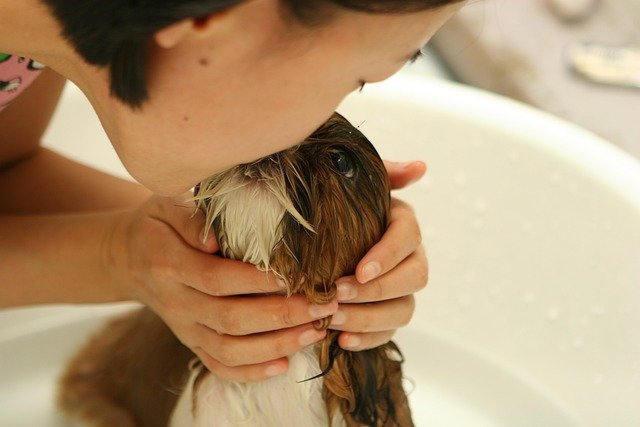Feeding Tools and Bowl Choices to Support Healthy Eating Habits
Choosing the right feeding tools and bowls helps dogs eat in ways that support digestion, portion control, and positive routines. This article outlines material choices, feeding accessories, and practical tips to match bowls and tools to a dog’s age, size, and lifestyle while considering durability, safety, and enrichment.

Feeding routines influence more than just calories: they shape behavior, dental health, and the way dogs respond during grooming, travel, and training. Thoughtful selection of bowls and complementary tools helps maintain consistent nutrition, limits overeating, and supports mealtime enrichment. Whether you have a puppy learning from training sessions or an older dog needing gentler options, simple adjustments in materials, height, and feeder type can promote calmer meals, reduce mess, and improve long-term eating habits.
How do feeding tools affect nutrition and digestion?
Feeding tools like slow feeders, puzzle bowls, and raised stands influence how quickly a dog consumes food and how effectively it chews. Slower eating can reduce gulping and may improve digestion for dogs prone to regurgitation or bloating; puzzle-style feeders also provide mental enrichment that encourages natural foraging behavior. For dogs on specific nutrition plans, portion-control tools such as measured scoops or programmable feeders help maintain consistent servings. Match feeder complexity to your dog’s cognitive level—too easy provides no benefit, too hard can cause stress during mealtime.
What bowl materials balance durability and hygiene?
Common bowl materials include stainless steel, ceramic, and food-grade plastic. Stainless steel tends to score high for durability and hygiene because it resists bacteria buildup, is dishwasher-safe, and does not chip. Ceramic offers stable weight and aesthetic variety but can crack or glaze with lead in low-quality options, so choose certified food-safe pieces. Plastics are lightweight and economical but can scratch, trapping bacteria and causing wear; use BPA-free, food-grade plastics and replace them when worn. Consider surface finish and ease of cleaning to limit hygiene concerns.
Can bowl choices support enrichment and training routines?
Bowls and feeding tools can double as training aids: treat-dispensing toys and slow feeders reward targeted behaviors and make training sessions interactive. Incorporating toys and puzzle feeders during mealtime provides mental stimulation, which can reduce undesirable behaviors linked to boredom. For obedience training tied to feeding, use small training portions and a separate training pouch to reinforce commands. Balance enrichment tools with clear staff-led routines so meals remain predictable and do not interfere with structured training plans.
How do safety and grooming considerations influence bowl selection?
Safety elements include non-slip bases, rounded edges, and materials that won’t chip into sharp fragments. Non-skid mats or rubber-bottom bowls reduce spills that lead to wet fur and extra grooming needs. Elevated feeders can benefit large or arthritic dogs by reducing neck strain, but poorly designed stands may tip and cause spills. Consider bowls that are easy to sanitize to prevent skin or oral hygiene issues—residual fats around lips and whiskers can attract matting in long-coated breeds, so choose shallow rims and keep fur trimmed where it contacts feeding surfaces.
What should you consider for travel and seasonal feeding needs?
For travel, compact collapsible bowls or sealed dispensers maintain portion control and hygiene on the go. Look for lightweight, easy-to-clean materials that pack flat for car or air travel and that won’t leak. Seasonal factors matter: summer feeding may require elevated bowls to keep food cool and prevent ants, while winter routines might prioritize insulated feeders for outdoor pets. During vacations or short trips, programmable feeders or measured portions paired with trusted local services can preserve consistent feeding schedules in your absence.
How do chews, collars, leashes, and bedding intersect with feeding routines?
Chews and dental treats complement feeding by supporting oral health, but they should be integrated into a nutrition plan to avoid excess calories. Collars and harnesses matter when transitioning from walks to meals—ensure tags and hardware won’t catch on bowls and that collars are comfortable during feeding. Leashes are useful when establishing calm entry to mealtime for multi-dog households. Bedding placement can affect where dogs prefer to rest after eating; provide a distinct feeding area away from sleeping spots to reinforce routine and hygiene. Toys and enrichment items kept near feeding zones should be durable and regularly cleaned.
This article is for informational purposes only and should not be considered medical advice. Please consult a qualified healthcare professional for personalized guidance and treatment.
Choosing bowls and feeding tools is a practical step toward healthier eating habits for dogs. Prioritize materials that combine durability and hygiene, select feeder types that match your dog’s physical and mental needs, and maintain consistent routines that tie into grooming, travel, and training practices. Small adjustments—measured scoops, non-slip bases, or enrichment feeders—can produce measurable improvements in digestion, behavior, and mealtime enjoyment.






